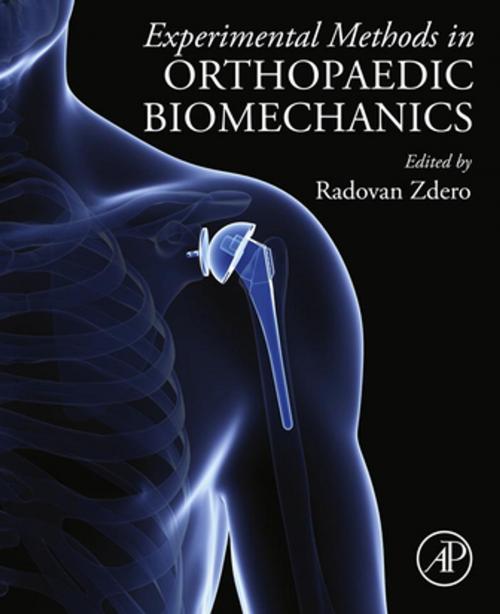Experimental Methods in Orthopaedic Biomechanics
Nonfiction, Science & Nature, Science, Biological Sciences, Biophysics, Technology, Engineering, Health & Well Being, Medical| Author: | ISBN: | 9780128038550 | |
| Publisher: | Elsevier Science | Publication: | October 14, 2016 |
| Imprint: | Academic Press | Language: | English |
| Author: | |
| ISBN: | 9780128038550 |
| Publisher: | Elsevier Science |
| Publication: | October 14, 2016 |
| Imprint: | Academic Press |
| Language: | English |
Experimental Methods in Orthopaedic Biomechanics is the first book in the field that focuses on the practicalities of performing a large variety of in-vitro laboratory experiments. Explanations are thorough, informative, and feature standard lab equipment to enable biomedical engineers to advance from a ‘trial and error’ approach to an efficient system recommended by experienced leaders.
This is an ideal tool for biomedical engineers or biomechanics professors in their teaching, as well as for those studying and carrying out lab assignments and projects in the field. The experienced authors have established a standard that researchers can test against in order to explain the strengths and weaknesses of testing approaches.
- Provides step-by-step guidance to help with in-vitro experiments in orthopaedic biomechanics
- Presents a DIY manual that is fully equipped with illustrations, practical tips, quiz questions, and much more
- Includes input from field experts who combine their real-world experience to provide invaluable insights for all those in the field
Experimental Methods in Orthopaedic Biomechanics is the first book in the field that focuses on the practicalities of performing a large variety of in-vitro laboratory experiments. Explanations are thorough, informative, and feature standard lab equipment to enable biomedical engineers to advance from a ‘trial and error’ approach to an efficient system recommended by experienced leaders.
This is an ideal tool for biomedical engineers or biomechanics professors in their teaching, as well as for those studying and carrying out lab assignments and projects in the field. The experienced authors have established a standard that researchers can test against in order to explain the strengths and weaknesses of testing approaches.
- Provides step-by-step guidance to help with in-vitro experiments in orthopaedic biomechanics
- Presents a DIY manual that is fully equipped with illustrations, practical tips, quiz questions, and much more
- Includes input from field experts who combine their real-world experience to provide invaluable insights for all those in the field















